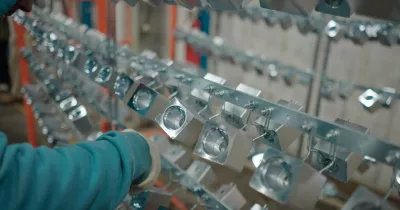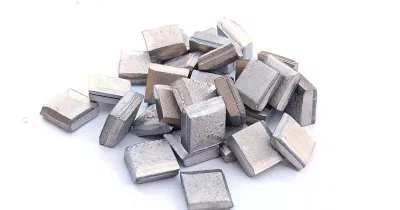The role of Chelating Agents in metal finishing

August 27, 2025
August 27, 2025
Metal finishing is a critical process across various industries, including automotive, aerospace, and electronics. It involves multiple stages such as cleaning, surface preparation, plating, and post-treatment to achieve desired properties like corrosion resistance, aesthetic appeal, and durability. Among the many chemical technologies that enable these processes, chelating agents play a pivotal role. These compounds are indispensable in controlling metal ion activity, enhancing cleaning efficiency, and ensuring environmental compliance in wastewater treatment.
Understanding Chelating Agents
Chelating agents are chemical compounds with at least two functional groups that can bind to metal ions, forming stable ring structures known as chelates. This binding prevents metal ions from participating in unwanted reactions, such as forming insoluble precipitates or interfering with cleaning and plating processes. Common chelating agents include EDTA (ethylenediaminetetraacetic acid), gluconates, and phosphonate.
The effectiveness of a chelating agent depends on its ability to form stable bonds with metal ions, its compatibility with other chemicals in the bath, and its environmental impact.
Applications of Chelating Agents in Metal Finishing
1. Metal Ion Control in Plating Baths
In electroplating and metal finishing, maintaining the stability of plating baths is crucial. Metal ions, if left uncontrolled, can precipitate as insoluble compounds or interfere with the deposition process. Chelating agents bind to these ions, ensuring a consistent concentration and preventing the formation of scale or sludge.
For example, in zinc-nickel plating, chelating agents stabilize zinc and nickel ions, enhancing the uniformity of the coating. Pavco’s advanced plating solutions integrate chelating technologies to optimize deposition rates and improve the quality of finishes.
2. Surface Cleaning and Pretreatment
Effective surface cleaning is a prerequisite for successful metal finishing. Alkaline cleaners, often used in pretreatment, rely on chelating agents to enhance their cleaning power. These agents bind to metal ions present in soils, grease, or oxides, preventing them from redepositing on the surface.
Some of our pre-plate solutions incorporate chelating agents to ensure pristine surfaces, which are essential for achieving strong adhesion in subsequent plating or coating steps. By integrating chelating agents with surfactants and inhibitors, these solutions deliver unmatched cleaning performance while protecting sensitive metals like aluminum.
3. Wastewater Treatment and Heavy Metal Removal
The removal of heavy metals from wastewater is a significant challenge in the metal finishing industry. Chelating agents play a dual role in this process: they prevent the precipitation of metal ions during cleaning and plating, and they facilitate the removal of these ions during wastewater treatment. However, chelating agents can also make it difficult to separate these metal ions from the wastewater. Adequate process planning and stream segregation is crucial for effective resource usage.
4. Passivation and Conversion Coating
Passivation and conversion coatings are critical post-treatment steps that enhance corrosion resistance and surface durability. Chelating agents contribute to these processes by ensuring the uniform distribution of protective layers and preventing the formation of defects caused by metal ion contamination.
Our post-plate solutions, including trivalent passivates and specialty coatings, utilize chelating agents to achieve superior corrosion protection. These products are particularly effective for zinc and zinc alloy plating, where they enhance the durability and aesthetic appeal of the finish.
5. Brightening and Leveling
In decorative plating applications, chelating agents act as leveling agents, improving the smoothness and brightness of the finish. By controlling the activity of metal ions, they ensure uniform deposition and reduce surface irregularities.
6. Eco-Friendly Chelating Agents
Traditional chelating agents like EDTA, while effective, pose environmental challenges due to their persistence in wastewater. For instance, Pavco’s Hex-A-Gone replaces hexavalent chromium, a known carcinogen, with a safer and more sustainable alternative. This innovation aligns with global efforts to phase out hazardous substances and reduce the environmental footprint of metal finishing processes.
The Pavco Advantage
Pavco’s commitment to innovation and sustainability has made us a trusted partner for the metal finishing industry. By integrating cutting-edge chelating technologies into our product line, we help manufacturers achieve enhanced process efficiency and cost savings.
Are you ready to elevate your metal finishing processes? Contact us today. Our team of experts is here to provide technical consultations, product recommendations, and customized solutions tailored to your needs.
IT’S HOW YOU FINISH

We’re a developer and supplier of chemistries for the metal finishing industry since 1948.
In PAVCO, we develop products and deliver services of the highest quality at a reasonable cost.






